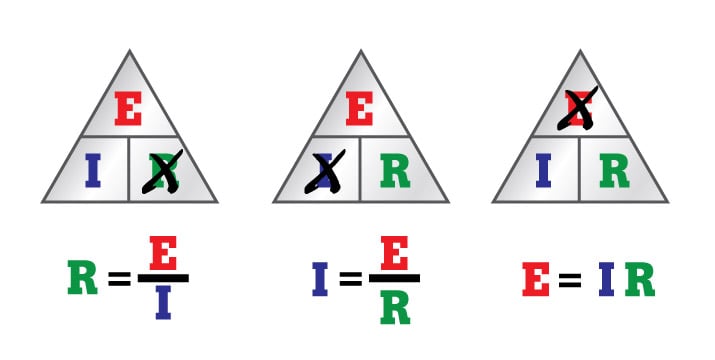What is Ohm’s Law?
This was derived by a German physicist named as Georg Ohm (1789-1854),
Ohm’s Law is a formula used to calculate the relationship between Voltage, Current and Resistance in an electronic circuit.
In electronics, Ohm’s Law (E = IR) is as fundamentally important as Einstein’s Relativity equation (E = mc²) is to physicists.
E = I x R
Which is voltage = current x resistance, or volts = amps x ohms, or V = A x Ω.
In Ohm’s Law each alphabets stands as below which is used in our day to day electronics and in circuits we work on:
| Quantity | Ohm’s Law symbol | Unit of measure (abbreviation) | Role in circuits | In case you’re wondering: |
|---|---|---|---|---|
| Voltage | E | Volt (V) | Pressure that triggers electron flow | E = electromotive force (old-school term) |
| Current | I | Ampere, amp (A) | Rate of electron flow | I = intensity |
| Resistance | R | Ohm (Ω) | Flow inhibitor | Ω = Greek letter omega |
If two of these values are known, technicians can reconfigure Ohm’s Law to calculate the third. Just modify the pyramid as follows:
